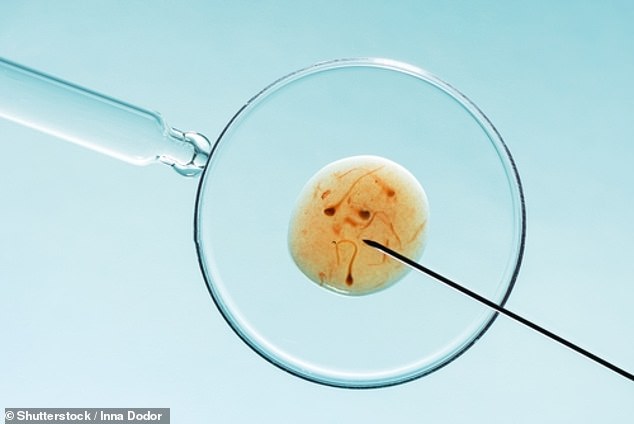Scientists discover ‘pause button’ for human life
Scientists have discovered a way to pause the growth of human embryos, marking a potential medical breakthrough.
The team discovered this by reducing Due to their activity in particular in certain chains of biological reactions involved in fetal growth, they were able to temporarily prevent the implantation of a fertilized embryo in the uterine wall until conditions were optimal.
By slowing the production of a protein involved in fetal growth, they were able to temporarily stop the growth of the fertilized embryo at its earliest stage – about a week after conception.
The researchers were able to keep the embryos in this resting state for 18 days, after which they reversed the pause to resume normal growth.
Researchers said the technique could be used to increase the success of IVF by creating a larger time window to assess the embryo’s health and improve its chances of implantation in the uterus.
Researchers have shown that reducing the activity of the mTOR signaling pathway puts stem cells and blastoids into a dormant state, similar to diapause
More than 130 species of mammals – from bears to mice – have the ability to do this temporarily pauses embryo development in a process called embryonic diapause.
It usually occurs during the blastocyst stage – when a fertilized egg has rapidly divided into a ball of cells called a blastocyst. This early stage of development begins about five or six days after fertilization.
A team of researchers from the Max Planck Institute in Berlin and the Institute for Molecular Biotechnology (IMBA) of the Austrian Academy of Sciences in Vienna has discovered a way to artificially induce a diapause-like state in human stem cells and blastoids. laboratory-grown blastocysts.
In both stem cells and blastoids, the researchers changed the activity of a certain chain of reactions, also called a molecular cascade.
A molecular cascade occurs when the movement of one molecule initiates the movement of another, and so on. This initiates a successive series of chemical reactions.
It works in the same way as a row of falling dominoes, with each falling domino causing the next to fall.
The pathway the researchers focused on is called the mTOR signaling pathway. It regulates cell metabolism, growth, proliferation and survival, and also plays an important role in fetal growth and development.

The study’s findings could improve the effectiveness of reproductive health care treatments such as in vitro fertilization (IVF)
When the researchers inhibited the mTOR signaling pathway, stem cells and blastoids entered a dormant state, similar to diapause.
The study’s findings show that the ability to enter quiescence is active in human cells around the blastocyst stage, the researchers wrote in their report.
Furthermore, they discovered that they could reverse this AFTER HOW LONG, allowing blastoids to resume normal development.
And when they enhanced the activity of the mTOR pathway, they found that embryo development accelerated.
They published their research in the journal this month Cell.
This research has uncovered a new way to control the growth of human pregnancies.
“Although we have lost the ability to naturally enter a resting state, these experiments suggest that we have nevertheless retained this inner ability and could eventually unleash it,” said co-author Nicolas Rivron of the Institute for Molecular Biotechnology (IMBA ) of the Austrian Academy. of Sciences in Vienna, in a statement.
Learning how to tap into this hidden ability in our cells could have major implications for reproductive health care treatments such as IVF.
“On the one hand, undergoing faster development is known to increase the success rate of in vitro fertilization, and improving mTOR activity could achieve this,” Rivron explains.
“On the other hand, inducing a dormant state during an IVF procedure could provide a greater window of time to assess the health of the embryo and synchronize it with the mother for better implantation in the uterus,” he added .
Further research will be needed to hone our ability to control this mechanism and safely induce diapause during IVF, but the researchers are optimistic that this work could lead to advances in reproductive health care treatments.
